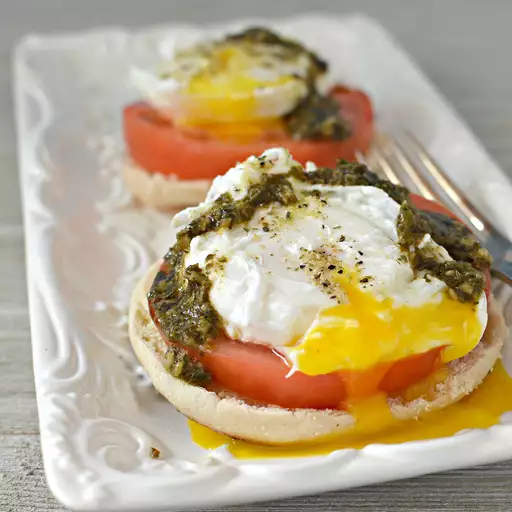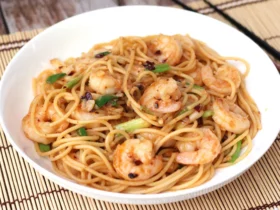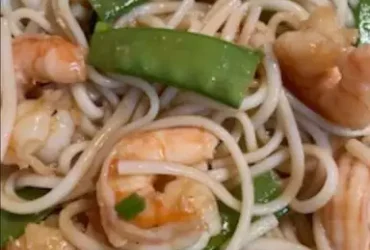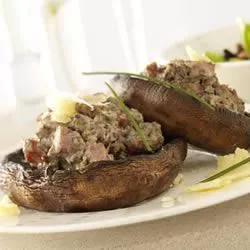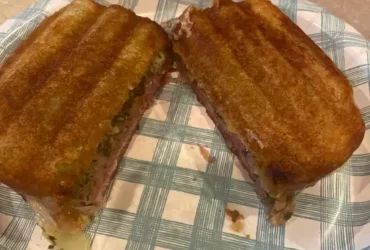Background and History
The Poached Eggs Caprese recipe is a delightful fusion of the classic Caprese salad and perfectly poached eggs. Caprese salad, originating from Italy, traditionally consists of fresh tomatoes, mozzarella cheese, and basil, seasoned with salt and olive oil. This dish brings together the freshness of Caprese salad with the rich, creamy texture of poached eggs, creating a satisfying and nutritious meal ideal for breakfast, brunch, or even a light dinner.
Ingredients
- 4 large eggs
- 2 medium tomatoes, sliced
- 8 ounces fresh mozzarella, sliced
- Fresh basil leaves
- 2 tablespoons olive oil
- 1 tablespoon balsamic glaze
- Salt and pepper to taste
- Water and a splash of vinegar (for poaching eggs)
Useful and Interesting Facts
- Healthy Choice: This dish combines high-quality protein from eggs with vitamins and antioxidants from tomatoes and basil.
- Culinary Versatility: Poached Eggs Caprese can be enjoyed as a standalone dish or served on toasted bread, making it versatile for different meal settings.
- Italian Inspiration: The recipe draws from the Caprese salad, a symbol of Italian culinary tradition, named after the island of Capri.
Instructions
Serves
2
Time
Preparation Time: 10 minutes
Cooking Time: 10 minutes
Total Time: 20 minutes
Cooking Time
10 minutes
Ingredients
- 4 large eggs
- 2 medium tomatoes, sliced
- 8 ounces fresh mozzarella, sliced
- Fresh basil leaves
- 2 tablespoons olive oil
- 1 tablespoon balsamic glaze
- Salt and pepper to taste
- Water and a splash of vinegar (for poaching eggs)
Instruction
- Prepare Ingredients: Slice the tomatoes and mozzarella cheese. Set aside fresh basil leaves.
- Heat Water: Fill a medium saucepan with water and add a splash of vinegar. Heat until just simmering.
- Poach Eggs: Crack each egg into a small bowl. Gently slide the eggs into the simmering water one at a time. Poach for 3-4 minutes until the whites are set but the yolks remain runny.
- Assemble Caprese Base: Arrange the tomato and mozzarella slices on serving plates. Season with salt and pepper, and drizzle with olive oil.
- Add Poached Eggs: Carefully remove the poached eggs with a slotted spoon and place them on top of the tomato and mozzarella slices.
- Garnish and Serve: Top with fresh basil leaves and drizzle with balsamic glaze. Serve immediately.
Nutrition Facts (Per Serving)
- Calories: 350
- Protein: 20g
- Carbohydrates: 6g
- Fat: 26g
- Fiber: 2g
- Sugar: 4g
- Sodium: 400mg
Notes
- Perfect Poaching: Adding vinegar to the poaching water helps the egg whites coagulate faster, resulting in a neater poached egg.
- Balsamic Glaze: For an extra touch of sweetness and acidity, the balsamic glaze enhances the overall flavor profile.
- Bread Option: Serve on toasted bread for a more substantial meal.
Allergy Warning
- Eggs: This recipe contains eggs, which may be allergenic to some individuals.
- Dairy: The recipe includes fresh mozzarella, which contains dairy. Use dairy-free cheese for a lactose-free option.
- Tomatoes: Some individuals may have allergies or sensitivities to tomatoes.
Enjoy the delightful combination of flavors and textures in Poached Eggs Caprese, a dish that brings a taste of Italy to your table!
What’s the secret to poached eggs?
The secret to perfect poached eggs is using fresh eggs and simmering water with a splash of vinegar. Gently creating a whirlpool in the water can also help keep the egg whites together for a neat poach.
How do restaurants make poached eggs?
Restaurants often use a controlled simmering water bath with vinegar and gently slide fresh eggs into the water. They may also use specialized egg poaching pans or molds to ensure consistency and perfect results.
Why add vinegar to poaching liquid for poached eggs?
Vinegar helps to coagulate the egg whites more quickly, preventing them from spreading out in the water and resulting in a neatly poached egg.
How to make a lot of poached eggs?
To make a lot of poached eggs, use a large pot or deep skillet with simmering water and vinegar. Crack each egg into a small cup and slide them into the water one at a time, ensuring they have enough space to cook without sticking together.
Which type of liquid is best for poaching?
Water is the best liquid for poaching, as it provides a neutral medium that doesn’t alter the flavor of the food being poached. For enhanced flavor, some recipes may call for broths or stocks.
How do you make poached eggs taste better?
Enhance the flavor of poached eggs by seasoning them with salt and pepper immediately after cooking. Serving them with complementary ingredients like herbs, cheese, or sauces can also elevate their taste.
Can I poach eggs without vinegar?
Yes, you can poach eggs without vinegar, but the eggs might spread out more in the water. Using the freshest eggs possible helps maintain their shape better without vinegar.
Which type of liquid is best for poaching eggs?
Water with a splash of vinegar is traditionally used for poaching eggs because it helps the egg whites set quickly. However, plain water can also be used, especially if the eggs are very fresh.
How long to soak eggs in vinegar before poaching?
There’s no need to soak eggs in vinegar before poaching. Simply adding a splash of vinegar to the simmering water right before adding the eggs is sufficient.
What do chefs use to poach eggs?
Chefs often use fresh eggs, simmering water with vinegar, and a gentle swirling technique to poach eggs. Some may also use egg poaching molds or pans for consistent results.
- Best LeadsGorilla Alternatives for 2025 - April 22, 2025
- Best Leadzai Alternatives for 2025 - April 22, 2025
- Best LeadSwift Alternatives for 2025 - April 21, 2025

